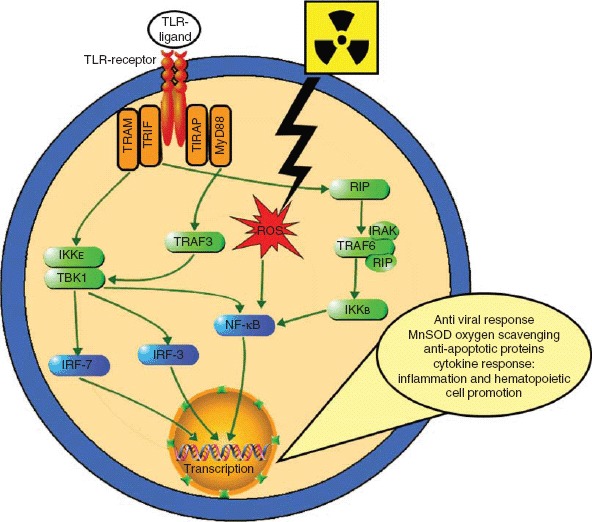Figure 3.

Schematic representation of TLR-ligand-mediated NF-κB activation. TLR ligands (multiple, not all radioprotective) interact with TLR receptor inducing two divergent signaling pathways controlled by two pairs of adaptor proteins: TRAM/TRIF and TIRAP/MyD88. The MyD88-dependent pathway quickly upregulates inflammatory cytokines via NF-κB activation by its dissociation from inhibitory component (IκB). This permits NF-κB to enter the nucleus where it can ‘turn on’ the expression of specific genes such as inflammatory or immune response, a cell survival response, cellular proliferation and oxygen-scavenging MnSOD. The MyD88-independent pathway does this as well, in addition to inducing type-1 IFN expression through IRFs and triggering IFN-β, which results in cell maturation. MyD88-independent pathways are activated with slower kinetics. Radiation produces ROS, which also activate NF-γB.
IKK: IκB kinase; IRAK: IL-1-receptor-associated kinase; IRF: IFN regulatory factor; MyD88: Myeloid differentiation primary-response protein 88; RIP: Receptor-interacting protein; ROS: Reactive oxygen species; TBK1: TANK-binding kinase 1; TIRAP: TIR (Toll−IL-1 receptor) domain-containing adaptor protein; TLR: Toll-like receptor; TRAF3: TNF-receptor-associated factor-3; TRAM: TRIF-related adaptor molecule; TRIF: Toll/IL-1R resistance domain-containing adapter inducing IFN.
